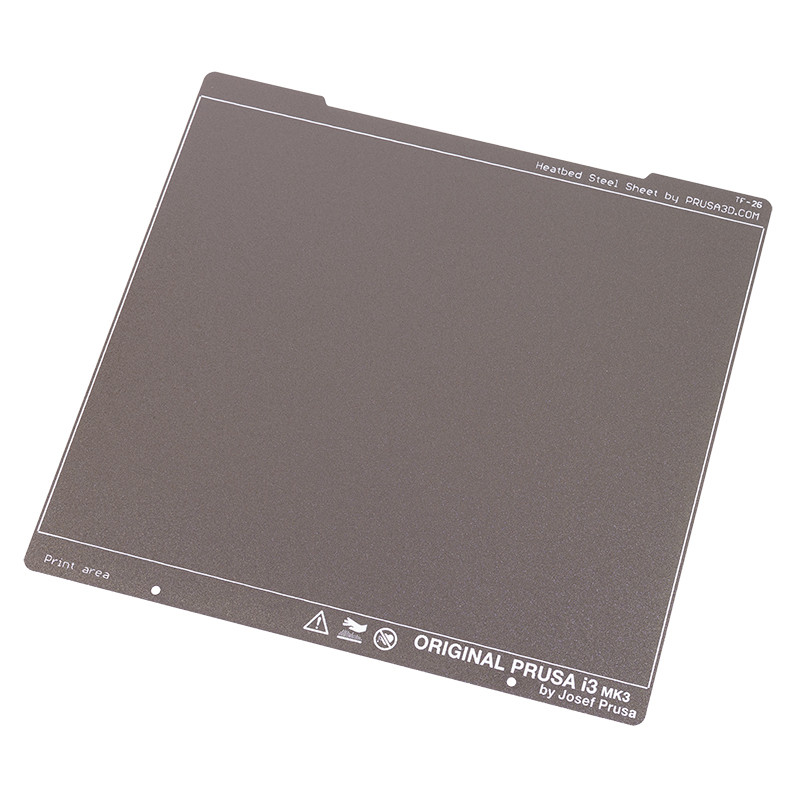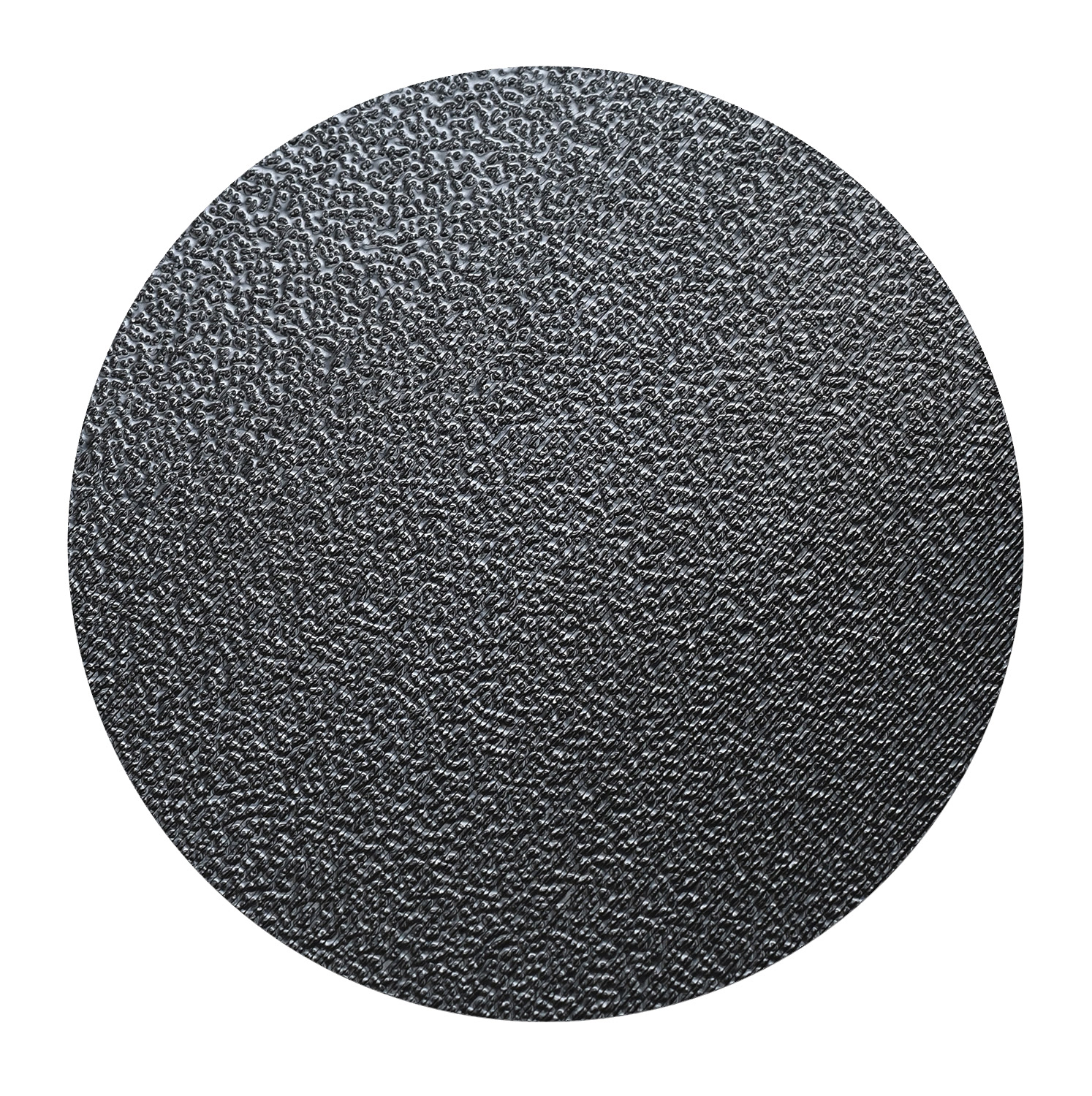The Original Prusa magnetic heatbed is designed to hold a removable double-sided flexible spring-steel sheet, designed specifically for easy removal of printed objects from the print surface.
 |  |
| Textured Sheet (color may differ from yours) | The underside of a printed object |
The powder-coated sheet, also referred to as the textured sheet, has its surface covered with a special polymer (Ultem PEI) to ensure perfect adhesion. These have been used in our print farm for many years and are perfect when printing a lot of high-adhesion filaments like PETG, and are also ideal for printing flexible filaments (TPU). It has a rougher texture than the Satin sheet and is more durable with some filaments than the smooth sheet .
Main attributes
- Textured finish
- Double-sided! Both sides can be used interchangeably.
- Thinner than its smooth counterpart.
- Ideal for extensive printing of PETG, CPE, TPEE/TPU.
- No need for glue stick with flexible filaments (TPU/TPEE)
- Prints automatically detach after the sheet cools down
- To be cleaned with ~90% IPA or denaturd alcohol when cold. Do not use anything made for skin! It can contain oils/sugars that ruin adhesion!
Considerations
- Never clean the sheet with acetone! It will deteriorate the surface!
- Never apply ABS juice to it!
- Prints from ASA, ABS, Nylon and PC Blend require the application of a glue stick (separation layer).
- Live Z value needs to be readjusted if you switch sheets. See Steel sheet profiles.
- Not scratch-resistant!!! Do not use metal spatulas etc. to remove the prints. We recommend printing a plastic spatula, like this one.
- Small PLA prints may require a Brim.
Filaments
We have done a lot of testing and compiled our results for you to use. To easily see how to prepare your sheet for any filament type, please see our Material table.
Prints don’t stick
If your print surface is perfectly clean and all grease has been removed by wiping it with a paper towel soaked in isopropyl alcohol ~90%. Also, make sure the first layer height is set up perfectly.
If your prints still do not adhere reliably to the print surface, try to wash the sheet in warm water (not hot!) with a few drops of liquid dish soap (not hand soap). This should not be done often, and do not submerge the sheet completely in hot water, bu this can clean away oils/sugars that are not affected by rubbing alcohol. However, the textured sheet is not water-proof so consider this a last resort which should not be done often.
For more info on how to deal with adhesion issues, please see First layer issues.
11 comments
^ bu is a typo for but
Sinol:
isopropanol 1–5 %
butanone 2 %
methyl isobutyl ketone 2 %
ethanol 91–95 %
Butanone is also known as Methylacetone, so I would guess it could have some adverse reaction with the powder coat?
We have not tested this product with the sheet, but indeed some of the components could damage it. It is better not to use it.